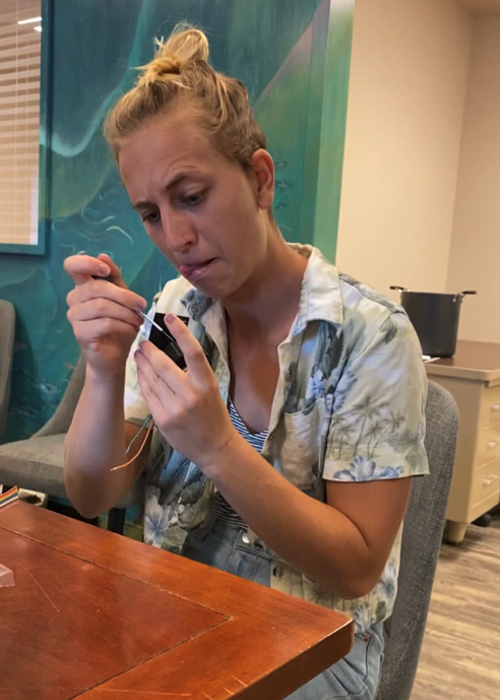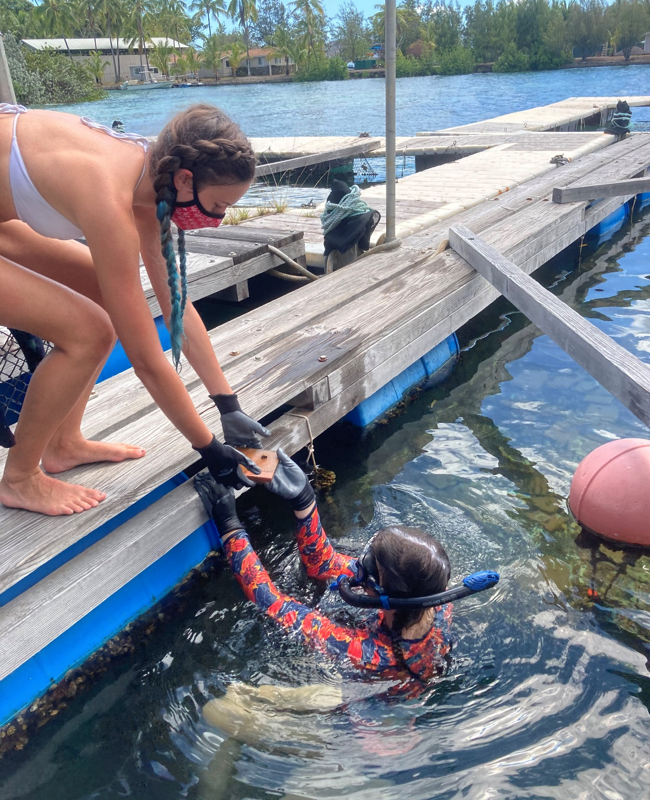Treating climate anxiety with action
by Devynn Wulstein (she/her)
Imagine flipping to the back synopsis of a random book in the bookstore and reading this:
“The year is 2021. A pandemic has swept across the globe, leaving a tidal wave of scientific denial, and fueling greater separation between the ‘haves’ and ‘have-nots.’ Terrifying disasters dominate: forests burn, creeks flood, and the ocean boils. Governments fail, and citizens fight for water. Billionaires begin their plans for leaving our birthplace behind and ensure that only their brethren can follow. The youngest generations are consumed by despair and remain inside, disconnected from the diminishing world of green and biodiversity. Will we escape, or will the algorithms within our favorite apps lull us deeper into complacency?”
I’d be terrified, because it describes our reality maybe a little bit too well. This isn’t an actual book, but chances are that if this were a Young Adult novel, the ending would be a pleasant one. Maybe a billionaire would decide to move their money away from space vacations and into climate action. Yet life is not YA fiction and is often a series of stressful realities, which combine with current environmental disasters to generate today’s plague of “climate change anxiety.”
The psychology behind climate change anxiety suggests that younger generations feel a more profound sense of despair over climate change. Yet, interestingly, this associated increase in depression and climate anxiety is not necessarily correlated with behavioral change. This despair is paralyzing and harmful to mental wellbeing. And understandably so. It often feels as if, regardless of the level of public concern, individual action, or calls to elected officials, nothing changes for the better. Actions that contribute to climate change continue to occur, from companies, governments, and individuals.
But, for all the hyperbole that ties up my sentiment, the essence of grief and pain is tangible when thinking about climate change and how little impact we seem to have as individuals. Media, whether social and artistic, often depict epic moments of loss. These documentaries or influencers aim to inspire but often only perpetuate fear and paralysis. Our “fight, flight, or freeze” response is triggered and undirected, leading to bursts of interest (if “fight” is dominant) and rapid return to business-as-usual (when “flight” and “freeze” take over).

During my first year of graduate school, I took a class where the professor began the course by encouraging us to seek the advice and comfort of mental health professionals because ecological depression was often a result of the course’s debates. This advice turned out to be incredibly sound and is a recommendation I would impart to all readers. Not only is seeing a therapist helpful, especially now, but it also helps emphasize the importance of building community and moving away from the feeling that you are alone against the big, bad world.
Community and individual action in concert with others are ways to beat back the despair, and why I am here talking to you.

As a Hawaiʻi Sea Grant Graduate Fellow and a citizen, I cannot disentangle my feelings from my scientific work, and my best hope for working past my ecological depression is ensuring that I find and build that community. My work focuses on quantifying the health of stony corals at sites throughout the Pacific monitored by the National Oceanic and Atmospheric Administration’s National Coral Reef Monitoring Program. When I am not in the coral nursery, I mostly sit behind a computer analyzing health through models based upon coral growth, survival, and reproduction rates.
Studying how corals are struggling to survive is fascinating because of the durability in some of these populations. Although hurricanes are becoming more frequent, temperatures are increasing, and many more pollutants are entering the ocean, many coral populations are still managing to maintain their presence and provide the habitat and essential resources for the rest of the ecosystem.
Why does it matter if we know which species are doing better or worse than others? With no end to climate change in sight, it is important to understand the natural mechanisms of species change and resilience. If we can pinpoint which populations are thriving versus struggling, we can focus our attentions through conservation or active interventions on those species with a greater chance of survival.
As a citizen, I can support land and water protectors—those deeply connected to place, and as a scientist, I can help to guide decisions through my favorite tool—math modeling. I know that my individual scientific actions can help build upon the growing knowledge of the larger community and guide those who manage these vital ecosystems, looking to a better future than 2021 seems to promise.
References used
- Clayton, S., & Karazsia, B. T. (2020). Development and validation of a measure of climate change anxiety. Journal of Environmental Psychology, 69, 101434.
- Comtesse, H., Ertl, V., Hengst, S. M. C., Rosner, R., & Smid, G. E.. (2021). Ecological Grief as a Response to Environmental Change: A Mental Health Risk or Functional Response?. International Journal of Environmental Research and Public Health, 18(2), 734.
- Clayton, S. (2020). The Insidious Impacts of Climate Change: Mood, Mental Health, and Psychosocial Well-Being. One Earth, 2(6), 530-531.
- Panu, P. (2020). Anxiety and the ecological crisis: An analysis of eco-anxiety and climate anxiety. Sustainability, 12(19), 7836.
- Wu, J., Snell, G., & Samji, H. (2020). Climate anxiety in young people: a call to action. The Lancet Planetary Health, 4(10), e435-e436.
- Whitmarsh, L., & Capstick, S. (2018) 2 – Perceptions of climate change, Psychology and Climate Change, Academic Press,13-33
 About the author:
About the author:
Devynn Wulstein is in the third year of her PhD in the Marine Biology Program at the Hawaiʻi Institute of Marine Biology. When not coding, writing, reading, or doing field work, she is probably out with her dog, in the waves, or attempting to make art.

